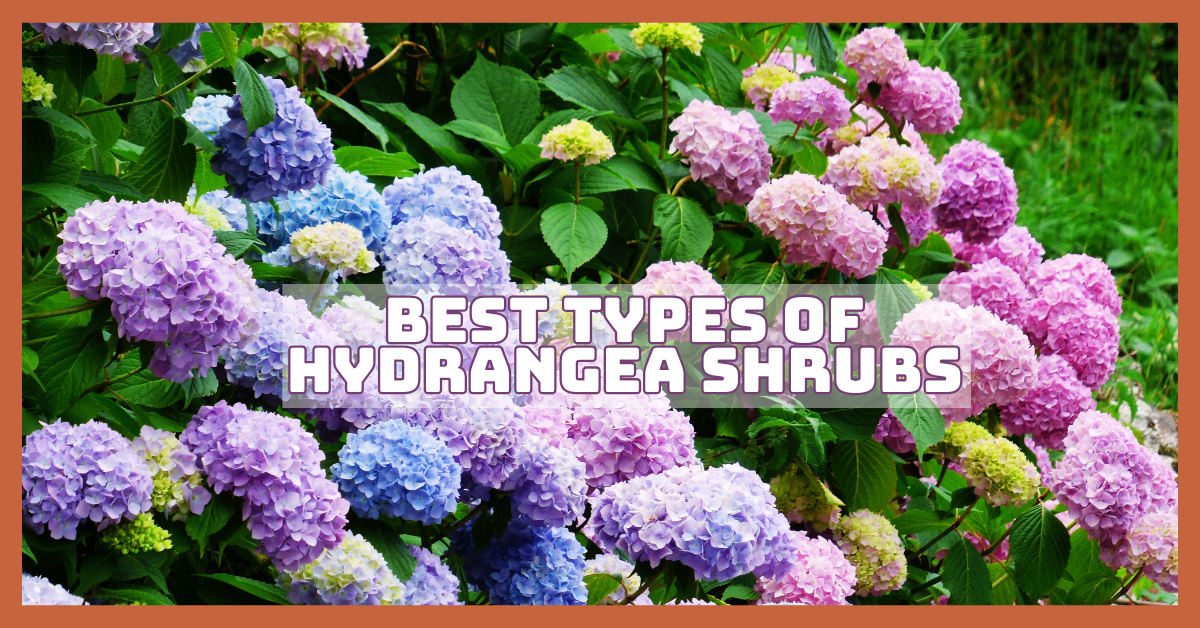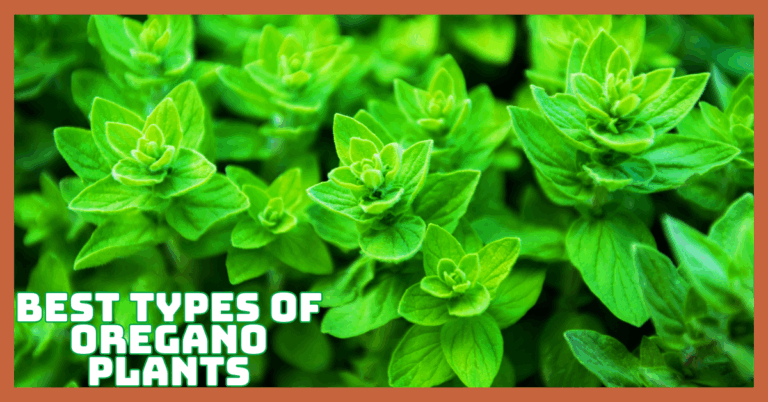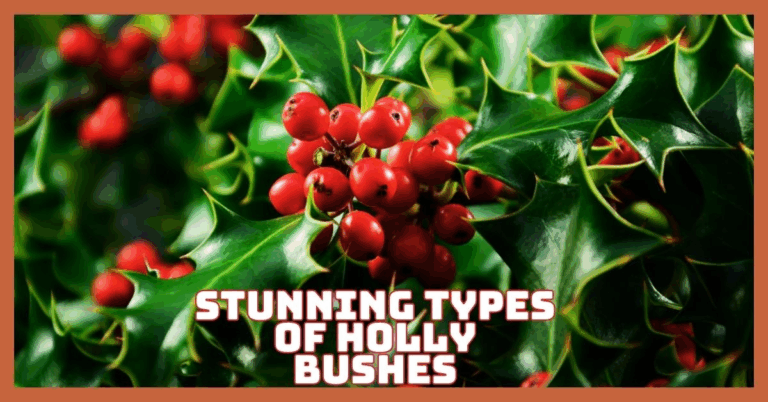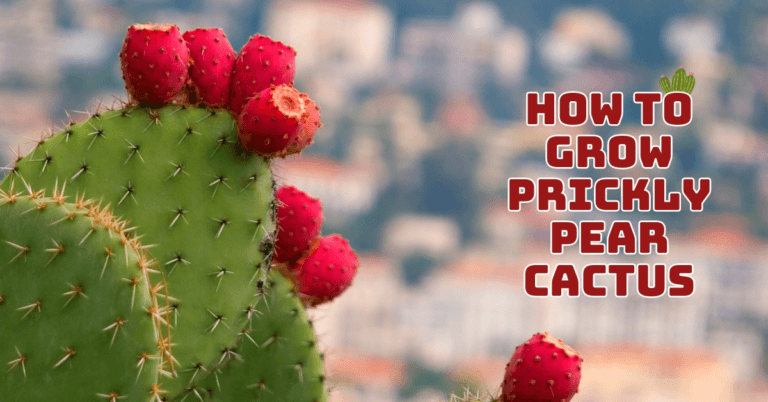Best Types Of Hydrangea Shrubs To Grow
Are you looking for colourful flowers to add colour to your garden? Discover the best types of hydrangea shrubs to grow today.
Hydrangeas come in a range of colours, styles, and sizes to fit any landscape, from striking mopheads to delicate lacecaps.
This article discusses the best hydrangea kinds and crucial growth advice for a successful garden throughout the year, regardless of your level of gardening experience.
A Bloom For Every Garden: Types Of Hydrangea Shrubs Explained
Hydrangeas are beloved for their stunning blooms, lush foliage, and versatility in gardens. With several unique shrub types, each offering distinct flower shapes, colours, and growing habits, there’s a hydrangea variety perfect for every landscape and gardener’s style.
1. Bigleaf Hydrangea (Hydrangea macrophylla)
- Also known as: Mophead or Lacecap hydrangea
- Bloom time: Late spring to summer
- Zones: 5–9
Features
Bigleaf hydrangeas are among the most popular types, known for their large, showy blooms that come in either mophead (rounded) or lacecap (flat) flower forms.
Their unique ability to change colour based on soil pH adds to their appeal—acidic soil produces blue flowers, while alkaline conditions turn them pink.
These shrubs are between three and six feet tall and frequently feature lustrous, dark green foliage. They look great as accents or foundation plants in garden beds that are somewhat shaded.
How To Grow
Plant Bigleaf hydrangeas in well-drained, consistently moist soil enriched with organic matter. The leaves can be scorched by full sun, so pick a spot that gets early light and afternoon shade.
Mulch can help control soil temperature and preserve moisture. These hydrangeas bloom mostly on old wood, so prune only immediately after flowering to avoid removing next year’s buds.
In colder climates, use mulch or leaves to cover the plant's base throughout the winter. For robust growth and colourful blooms, fertilize in the spring using a balanced, slow-release fertilizer.
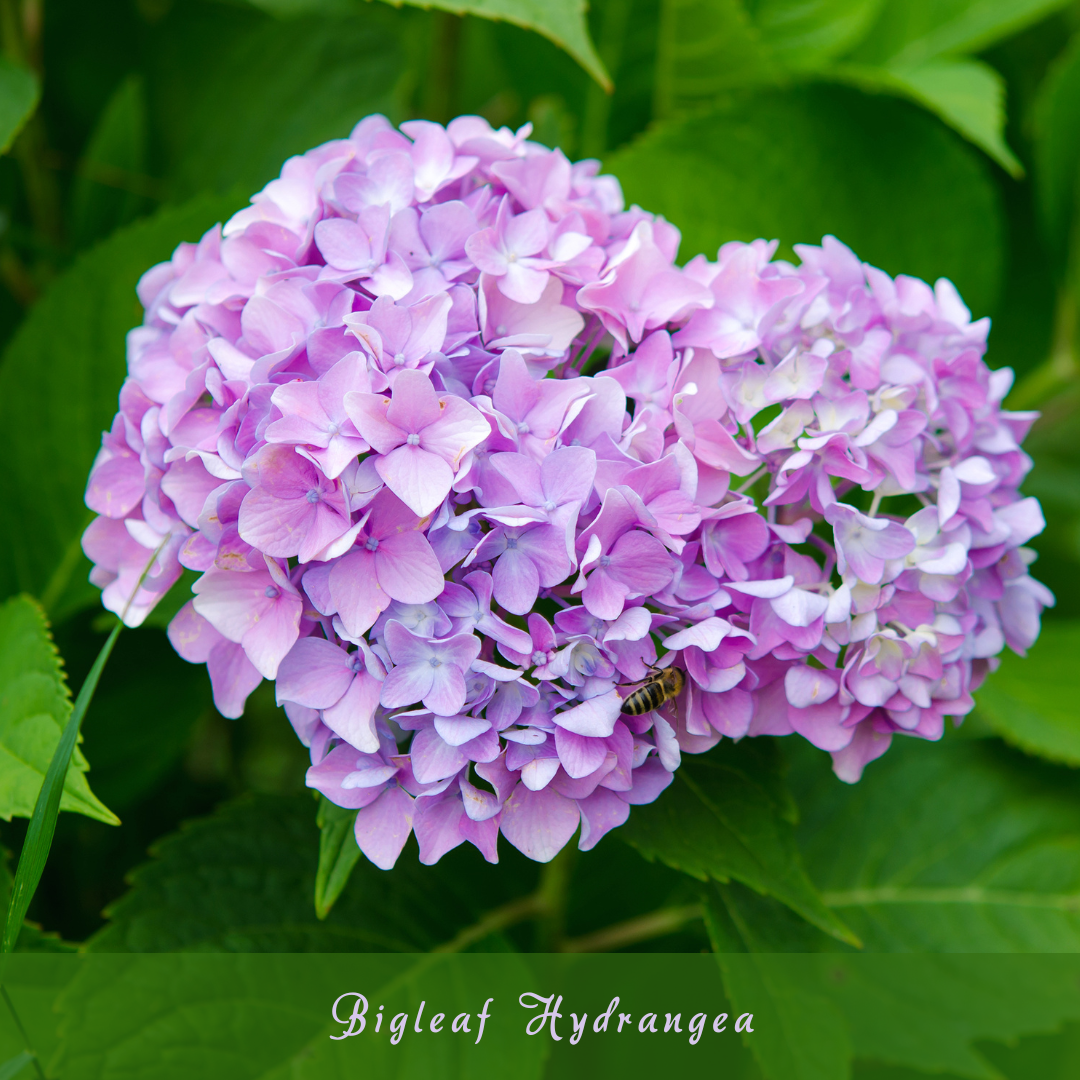
2. Panicle Hydrangea (Hydrangea paniculata)
- Also known as: PeeGee hydrangea
- Bloom time: Midsummer to fall
- Zones: 3–8
Features
Panicle hydrangeas stand out with their upright, cone-shaped flower clusters that begin white and gradually age to pink or rose hues.
These hardy shrubs can tolerate more sun and cold than other types, making them ideal for northern gardens. They grow larger than most hydrangeas—up to 15 feet tall—and are available in both dwarf and tree forms.
Their strong stems support heavy blooms, and their extended bloom time into fall makes them valuable for long-lasting seasonal interest.
How To Grow
Plant panicle hydrangeas in full sun to partial shade, ideally in well-drained, moderately fertile soil. While they tolerate some drought, regular watering during dry spells encourages lush blooms.
These hydrangeas bloom on fresh wood, so pruning in late winter or early spring promotes expansive blossoming. Use clean, sharp shears to shape or rejuvenate the shrub.
To promote quick growth, fertilize in the spring with a balanced fertilizer. Mulching lowers weed competition while preserving soil moisture. Their reliability and adaptability make them one of the easiest hydrangeas to grow and maintain.
3. Smooth Hydrangea (Hydrangea arborescens)
- Also known as: Wild hydrangea or Annabelle hydrangea
- Bloom time: Early to late summer
- Zones: 3–9
Features
Smooth hydrangeas are one of the hardiest types of hydrangea shrubs, known for their large blooms and reliable cold-weather performance.
These hydrangeas produce white to pale green blooms and offer a more natural, wild appearance compared to other types. Their delicate, flexible stems allow them to grow to a height and width of 3 to 5 feet.
Unlike others, smooth hydrangeas bloom on new wood, ensuring consistent flowering even after harsh winters. They’re perfect for mass plantings, woodland edges, and informal garden settings.
How To Grow
Choose a location with partial shade, though smooth hydrangeas can tolerate full sun if the soil stays consistently moist.
Water often, especially in hot or dry weather, and plant in rich, well-drained soil. In late winter, trim stems to 6 to 12 inches above the ground to promote robust new growth and larger flower heads, since they bloom on new wood.
Mulch the base to keep moisture in and keep weeds out. Fertilize in spring with a general-purpose fertilizer to support healthy foliage and bloom development.
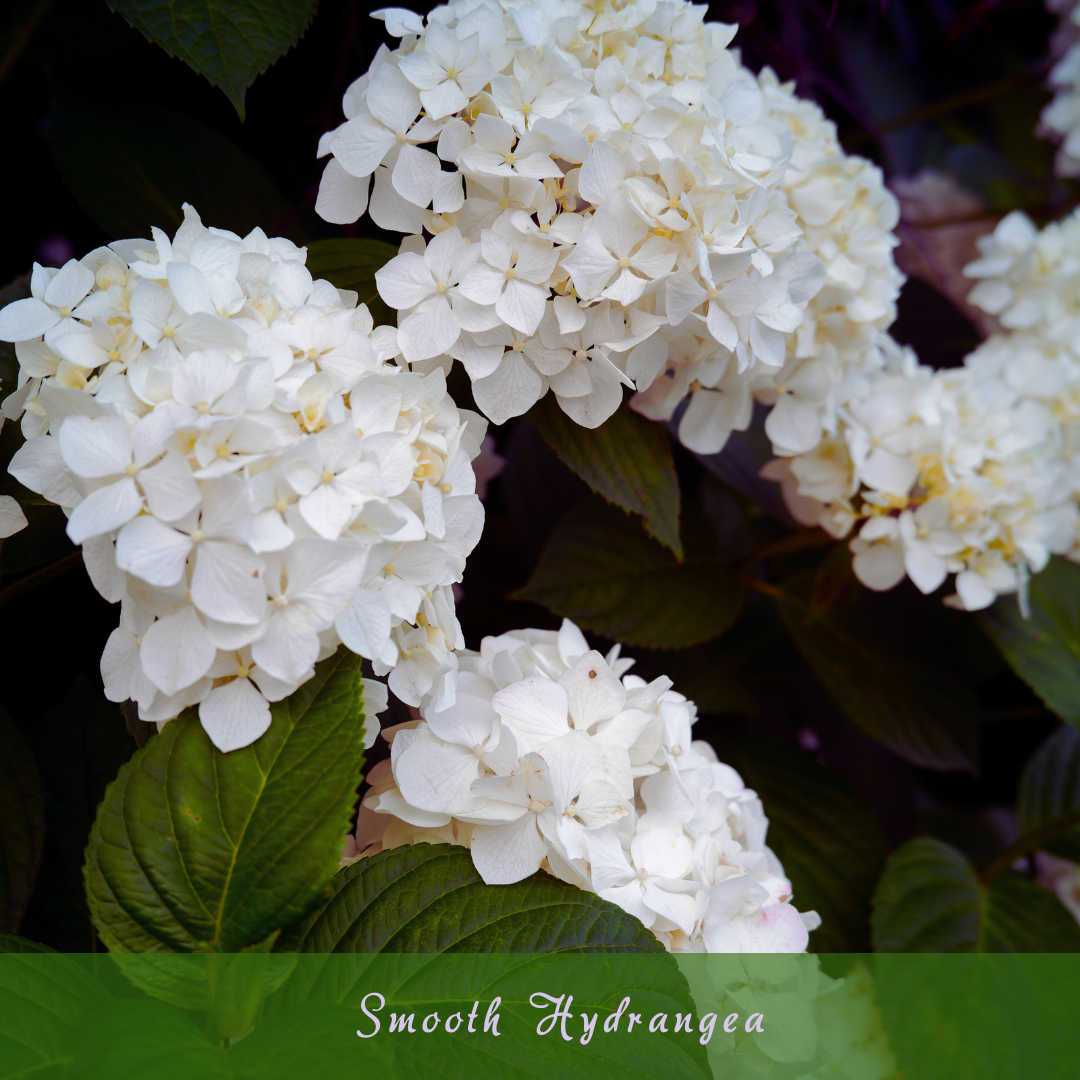
4. Oakleaf Hydrangea (Hydrangea quercifolia)
- Also known as: Oak-Leaved Hydrangea
- Bloom time: Early summer
- Zones: 5–9
Features
Oakleaf hydrangeas offer year-round interest with their bold, lobed leaves that resemble oak tree foliage and cone-shaped flower clusters.
In summer, they display white blooms that slowly turn pink, while in fall, the leaves provide spectacular colour in shades of red, bronze, and purple.
This hydrangea type typically grows 4 to 6 feet tall, but larger cultivars can reach up to 10 feet. It brings strong architectural interest to gardens and performs beautifully in naturalized areas and shaded woodland gardens.
How To Grow
Plant oakleaf hydrangeas in well-drained soil with partial shade to full sun. In warmer climates, provide afternoon shade to prevent leaf scorch. Once established, they are more drought-tolerant than other hydrangeas.
Water deeply during dry spells, and mulch to keep roots cool and moist. Since they bloom on old wood, prune only after flowering to shape or remove spent blooms.
Apply a slow-release fertilizer sparingly in the early spring. These hydrangeas thrive with minimal care and reward gardeners with stunning flowers and foliage.
5. Climbing Hydrangea (Hydrangea anomala subsp petiolaris)
- Also known as: Climbing Hydrangea
- Bloom time: Late spring to early summer
- Zones: 4–8
Features
Climbing hydrangeas stand out among the unique types of hydrangea shrubs, offering vertical charm and year-round interest in garden landscapes.
They produce lacy, fragrant white flowers in late spring and early summer, and their dark green foliage turns yellow in fall. Though slow to establish, they can eventually reach 30 to 50 feet in height.
These plants add vertical beauty to shaded areas and structures. Their peeling bark adds winter interest, making them a four-season favourite in both formal and naturalistic landscapes.
How To Grow
Plant climbing hydrangeas in rich, well-drained soil with partial to full shade. Provide a strong support structure, such as a wall, trellis, or arbour, as mature plants become quite heavy.
Water regularly, especially in the first few years while roots are establishing. To preserve moisture and lessen weed competition, spread a layer of mulch.
Minimal pruning is required—simply remove dead or stray stems after flowering. Avoid planting too close to wood siding, as the clinging rootlets can cause damage over time.
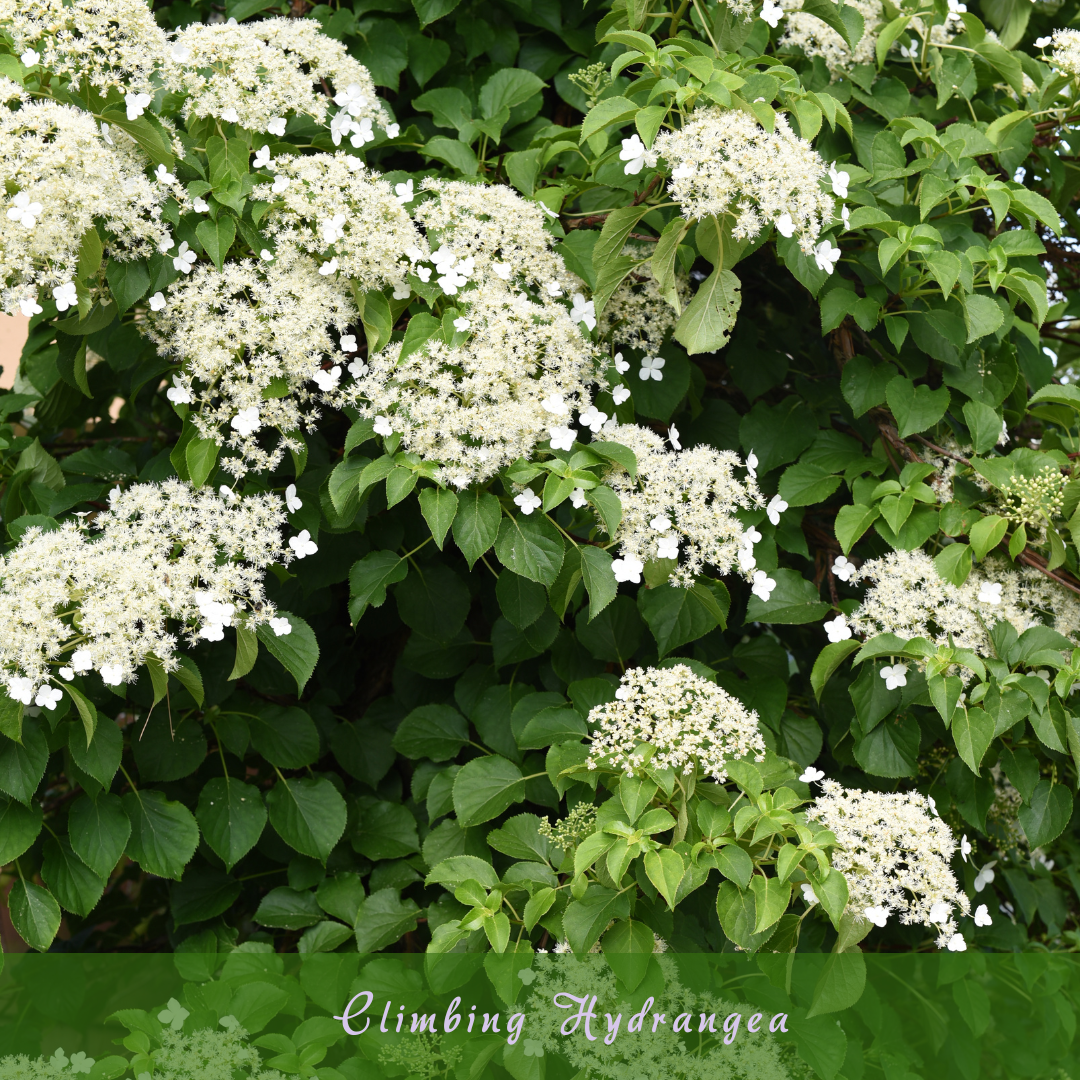
6. Bracted Hydrangea (Hydrangea involucrata)
- Also known as: Velvet hydrangea
- Bloom time: Late summer
- Zones: 6–9
Features
Bracted hydrangeas are a lesser-known species that produce fuzzy buds and soft, velvety leaves. Their delicate lacecap flowers typically appear in late summer and are surrounded by showy, papery bracts. Flowers range in shades of lavender, blue, or white, adding a graceful touch to the garden.
These compact shrubs grow about 3 to 4 feet tall and wide, making them perfect for smaller spaces. Their slow growth and interesting texture make them an elegant addition to shaded borders and woodland gardens.
How To Grow
Plant Hydrangea involucrata in partial shade with humus-rich, well-drained soil. Consistent moisture is essential, especially during dry spells.
They bloom on new wood, so pruning these hydrangeas in late winter or early spring will encourage new growth and blossoms. To preserve moisture and shield the roots, use mulch.
To promote healthy development, fertilize in the early spring using a balanced fertilizer. Though slow-growing, they’re pretty easy to care for and reward patient gardeners with charming, understated summer blooms.
Turn Your Passion for Nature Into Income
🌿 Whether you love gardening, caring for animals, or exploring holistic living,
You can share your knowledge online and earn from it.
Discover how nature lovers are growing their passions into meaningful, income-generating blogs. 👇
7. Mountain Hydrangea (Hydrangea serrata)
- Also known as: Tea of Heaven
- Bloom time: Summer
- Zones: 5–9
Features
Mountain hydrangeas are compact and hardy relatives of bigleaf hydrangeas, offering a delicate, refined alternative with lacecap-style blooms.
These shrubs are perfect for smaller gardens or containers because they usually reach heights of 2 to 4 feet and widths of 4 feet. Like bigleaf types, their flower colour can shift with soil pH—blue in acidic soils and pink in alkaline soils.
They have finely toothed leaves and are more cold-tolerant, which helps them thrive in cooler climates where other hydrangeas might struggle to bloom reliably.
How To Grow
Plant mountain hydrangeas in partial shade with rich, moist, well-drained soil. They prefer consistent moisture, especially during the heat of summer, so mulch well to retain water and suppress weeds.
Avoid heavy pruning, as they bloom mostly on old wood—prune only to remove dead or damaged branches after flowering. Apply a balanced, slow-release fertilizer in the early spring.
In colder climates, consider protecting buds in winter with a layer of mulch or burlap. These graceful shrubs are excellent for borders and woodland gardens.
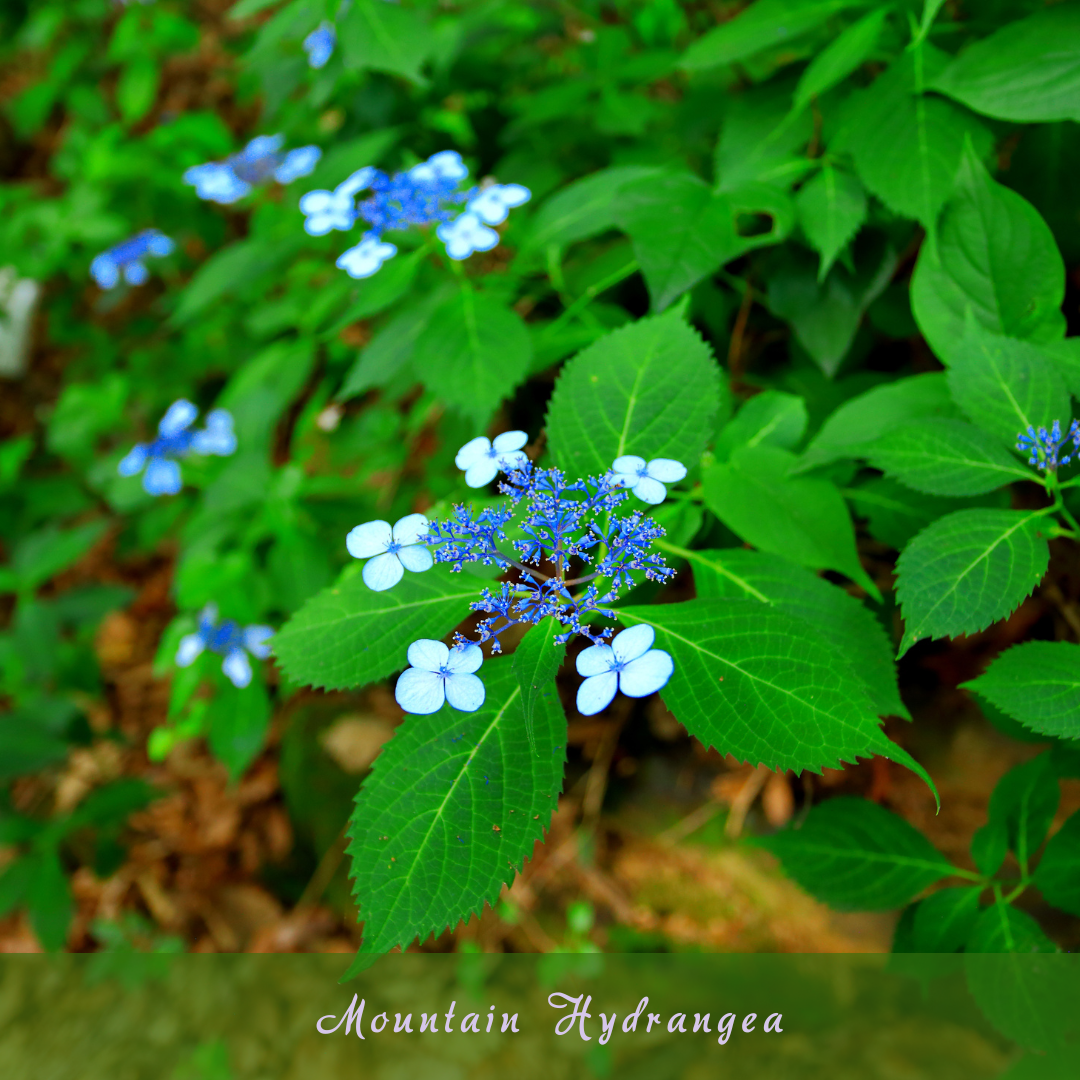
8. Rough-leaf Hydrangea (Hydrangea aspera)
- Also known as: Hairy hydrangea
- Bloom time: Mid to late summer
- Zones: 6–9
Features
The rough-leaf hydrangea is one of the most distinctive types of hydrangea shrubs, valued for its exotic blooms and striking foliage.
These shrubs feature wide lacecap blooms in shades of lavender, violet, and pale blue, surrounded by white or pink bracts. Some cultivars, like ‘Macrophylla', have flamboyant foliage and larger flower clusters.
Their height and width of 6 to 10 feet make them ideal for broad shade gardens or back-of-border locations. Their soft texture and unusual beauty make them a standout in any hydrangea collection.
How To Grow
Grow Hydrangea aspera in dappled shade, ideally protected from harsh winds and afternoon sun. Provide rich, well-draining soil that stays consistently moist.
Water regularly and mulch around the base to maintain moisture and reduce weeds. These shrubs bloom on old wood, so prune sparingly, mainly after flowering, to shape or remove damaged stems.
Apply compost or a balanced fertilizer in the early spring. Their large size and exotic look make them perfect for woodland borders and collectors’ gardens.
9. Endless Summer Hydrangea (Hydrangea macrophylla)
- Also known as: Reblooming hydrangea
- Bloom time: Late spring to fall
- Zones: 4–9
Features
The Endless Summer hydrangea is a revolutionary reblooming variety of bigleaf hydrangea that flowers on both old and new wood, providing continuous blooms from late spring through fall.
This cultivar has traditional mophead flowers that can be either blue or pink depending on the pH of the soil, and it grows 3 to 5 feet tall and wide.
Its reliability and bloom performance have made it a favourite among gardeners. It's perfect for flower beds, containers, and foundation plantings.
How To Grow
Plant in partial shade in rich, consistently moist, well-draining soil. To minimize temperature swings and preserve soil moisture, apply mulch.
After the initial flower flush, trim sparingly to promote more blooms later in the season. Since it blooms on both old and new wood, it’s more forgiving than traditional bigleaf hydrangeas.
Fertilize in spring with a bloom-boosting fertilizer, and protect flower buds in colder climates with winter mulch. Throughout the growing season, deadhead wasted blooms to promote more blooming.
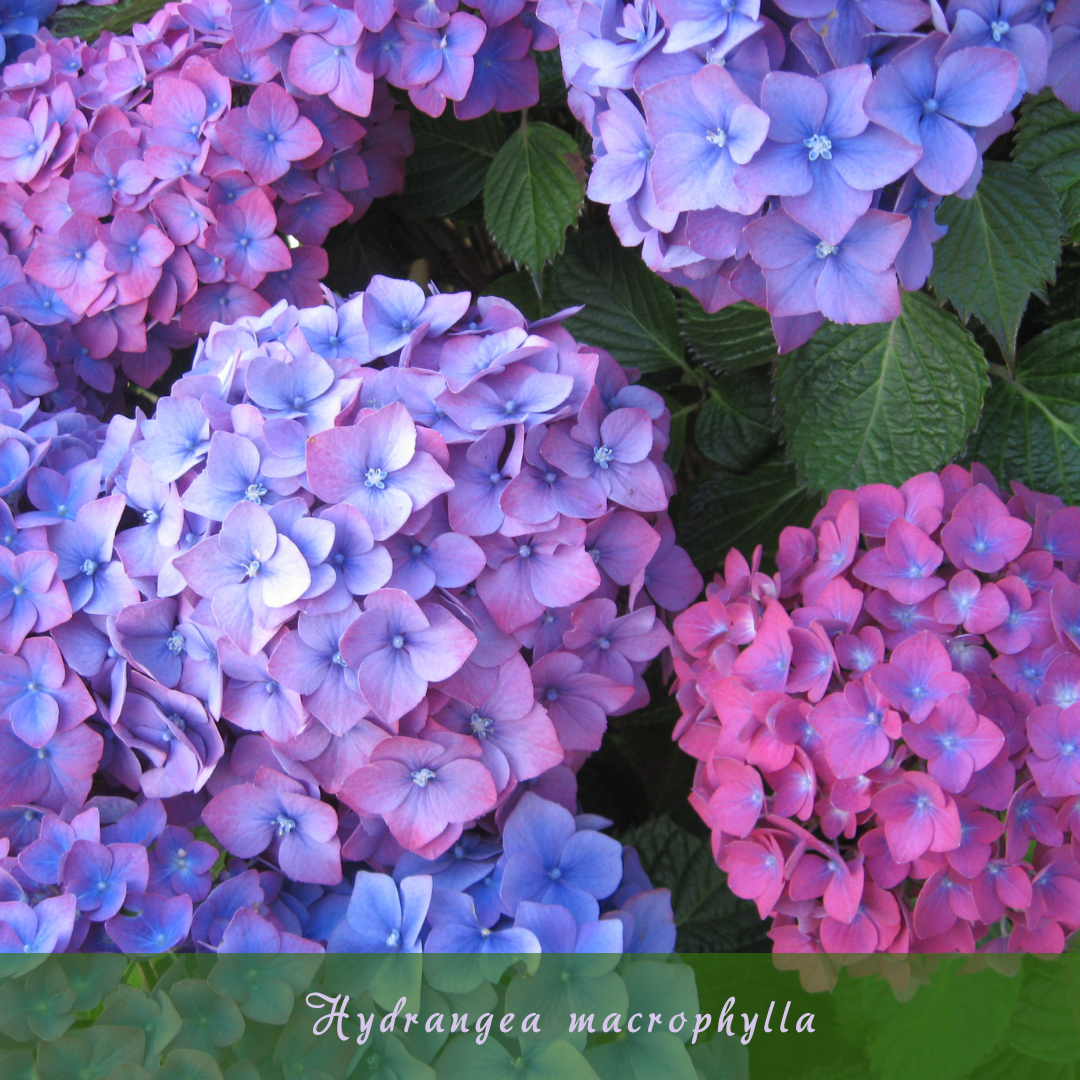
10. Limelight Hydrangea (Hydrangea paniculata ‘Limelight')
- Also known as: Big Ben hydrangea
- Bloom time: Fall to mid-to-late summer
- Zones: 3–9
Features
The Limelight hydrangea is a striking example among the types of hydrangea shrubs, celebrated for its bold colour shifts and strong, upright form.
This fast-growing shrub can reach 6 to 8 feet tall and wide, and its sturdy stems hold up heavy flowers without flopping.
‘Limelight’ is a favourite for its stunning summer-to-fall colour transition and versatility in both formal and informal landscapes. It also makes excellent cut flowers, both fresh and dried.
How To Grow
Plant ‘Limelight’ in full sun to partial shade, in well-drained, fertile soil. Water regularly, especially in the first year, and mulch to retain moisture.
Prune in late winter or early spring to help shape and promote brightly coloured blossoms, as it blooms on young wood. In the spring, apply a balanced fertilizer with a delayed release.
‘Limelight' is a dependable choice for the majority of regions because it requires very little upkeep and is cold-hardy. It thrives in borders, as a hedge, or even in large containers.
How To Choose The Right Hydrangea For Your Garden
Hydrangeas offer stunning blooms in various colours, shapes, and sizes. Choosing the right type ensures healthy growth, minimal maintenance, and the perfect aesthetic fit for your garden.
1. Understand Your Climate Zone
The first step in choosing the right hydrangea is knowing your USDA hardiness zone. Different hydrangeas thrive in other climates.
Bigleaf types prefer warmer zones 6–9, while panicle and smooth varieties are hardier, growing well in zones 3–8 or even 9.
Oakleaf hydrangeas do best in zones 5–9. Matching your hydrangea to your climate will ensure healthy growth and reliable blooms. Check your zone online or on plant tags before purchasing a hydrangea for your garden.
2. Assess Your Sunlight Conditions
Hydrangeas have varying sun needs depending on their type. Most prefer morning sun and afternoon shade, especially in hot regions.
Panicle hydrangeas are sun-tolerant and can handle full sun, making them ideal for bright spots. Bigleaf and oakleaf hydrangeas do better in partial shade and can struggle in full sun.
Before choosing a variety, observe how much sun your planting area gets throughout the day. Selecting the right type for your light conditions improves plant health and flowering.
3. Decide On Flower Style And Bloom Time
Knowing the bloom times of different types of hydrangea shrubs helps gardeners create a landscape with continuous colour throughout the growing season.
Panicle hydrangeas bloom later, with cone-shaped flowers turning pink as they age. Smooth hydrangeas bloom in mid-summer with large white balls of flowers, while oakleaf types flower in early summer with pyramidal blooms.
Understanding bloom time helps with garden planning and ensures a continuous show of colour throughout the season.
4. Choose The Right Size For Your Space
Hydrangeas range in size from compact dwarfs to large shrubs. If you have a small garden, look for compact varieties like ‘Little Lime’ or ‘Mini Penny,’ which stay under 3 feet tall.
For hedges or backdrop planting, larger types like ‘Limelight’ or oakleaf hydrangeas can reach 6–8 feet. Matching the hydrangea’s mature size to your available space prevents overcrowding and reduces maintenance. Always check plant tags or labels to know how big your chosen variety will get.
5. Select Your Preferred Bloom Colour
Bloom colour is an exciting feature of hydrangeas. Bigleaf hydrangeas can change colour depending on the soil's pH—blue in acidic soil and pink in alkaline conditions.
Gardeners can amend the soil to influence the colour. In contrast, panicle, oakleaf, and smooth hydrangeas have blooms that do not change with soil chemistry.
If you're aiming for consistent colours, choose non-variable types. For colour experimentation, bigleaf hydrangeas offer the most fun and flexibility with their pH-sensitive hues.
6. Consider Maintenance And Pruning Needs
Different hydrangeas have different care needs, especially when it comes to pruning. Bigleaf and oakleaf types often bloom on old wood, so that improper pruning can reduce flowering.
Newer varieties, like some bigleaf cultivars, bloom on both old and new wood for added reliability. With every spring trimming, smooth and panicle hydrangeas are easier to care for because they bloom on fresh wood.
Also, certain types can withstand drought better than others. Select one that suits your time commitment and gardening style.
FAQs
What Is The Easiest Type Of Hydrangea To Grow?
The Smooth Hydrangea (Hydrangea arborescens), especially the ‘Annabelle’ variety, is considered one of the easiest to grow. It’s hardy, low-maintenance, and blooms reliably even after harsh pruning or winter damage.
Which Hydrangea Is Best For Small Gardens?
Panicle hydrangeas like ‘Little Lime’ or Dwarf varieties of Bigleaf Hydrangea, such as ‘Cityline’ or ‘Mini Penny,’ are ideal for compact spaces, offering beautiful blooms without overwhelming the area.
Conclusion
Hydrangeas are a timeless favourite for gardeners, offering beauty, versatility, and seasonal colour. By choosing from the best types of hydrangea shrubs to grow today, you can create stunning garden displays that thrive year after year.
Whether you're drawn to bold blooms or subtle elegance, there's a hydrangea for every space. Start planting now and enjoy the rewards of these charming shrubs in your backyard sanctuary.
I trust you enjoyed this article on Best Types Of Hydrangea Shrubs To Grow. Please stay tuned for more inspiring guides, helpful tips, and ideas to help you live closer to nature every day.
Take care!
— JeannetteZ
💬 Your Opinion Is Important To Me
Do you have thoughts, ideas, or questions? I’d love to hear from you. Please leave your comments below or email me directly at Jeannette@Close-To-Nature.org.
📚 More Nature-Inspired Reads
Explore more ways to connect with nature, nurture your pets, and live in harmony with the world around you 🌿

